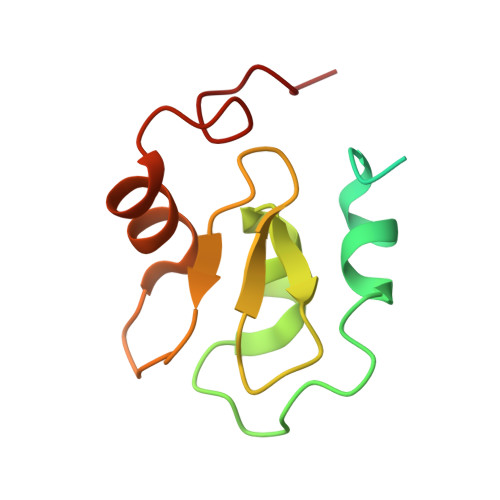NF023 binding to XIAP-BIR1: Searching drugs for regulation of the NF-kappa B pathway.
Cossu, F., Milani, M., Grassi, S., Malvezzi, F., Corti, A., Bolognesi, M., Mastrangelo, E.(2015) Proteins 83: 612-620
- PubMed: 25619915
- DOI: https://doi.org/10.1002/prot.24766
- Primary Citation of Related Structures:
4OXC - PubMed Abstract:
Inhibitor of Apoptosis Proteins (IAPs) are the target of extensive research in the field of cancer therapy since they regulate apoptosis and cell survival. Smac-mimetics, the most promising IAP-targeting compounds specifically recognize the IAP-BIR3 domain and promote apoptosis, competing with caspases for IAP binding. Furthermore, Smac-mimetics interfere with the NF-κB survival pathway, inducing cIAP1 and cIAP2 degradation through an auto-ubiquitination process. It has been shown that the XIAP-BIR1 (X-BIR1) domain is involved in the interaction with TAB1, an upstream adaptor for TAK1 kinase activation, which in turn couples with the NF-κB survival pathway. Preventing X-BIR1 dimerization abolishes XIAP-mediated NF-κB activation, thus implicating a proximity-induced mechanism for TAK1 activation. In this context, in a systematic search for a molecule capable of impairing X-BIR1/TAB1 assembly, we identified the compound NF023. Here we report the crystal structure of the human X-BIR1 domain in the absence and in the presence of NF023, as a starting concept for the design of novel BIR1-specific compounds acting synergistically with existing pro-apoptotic drugs in cancer therapy.
- Dipartimento Di Bioscienze, Università Di Milano, I-20133, Italy.
Organizational Affiliation:

















